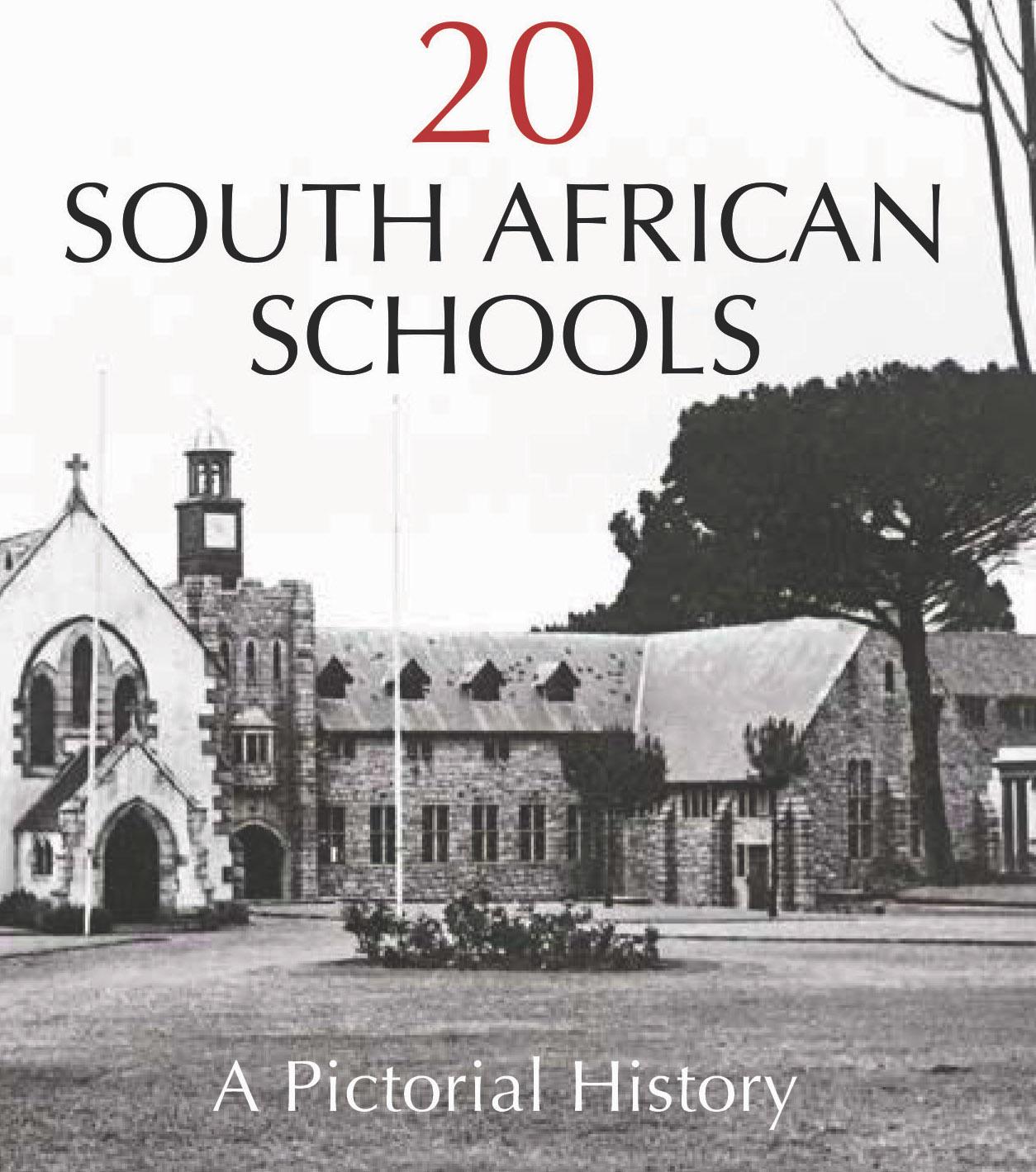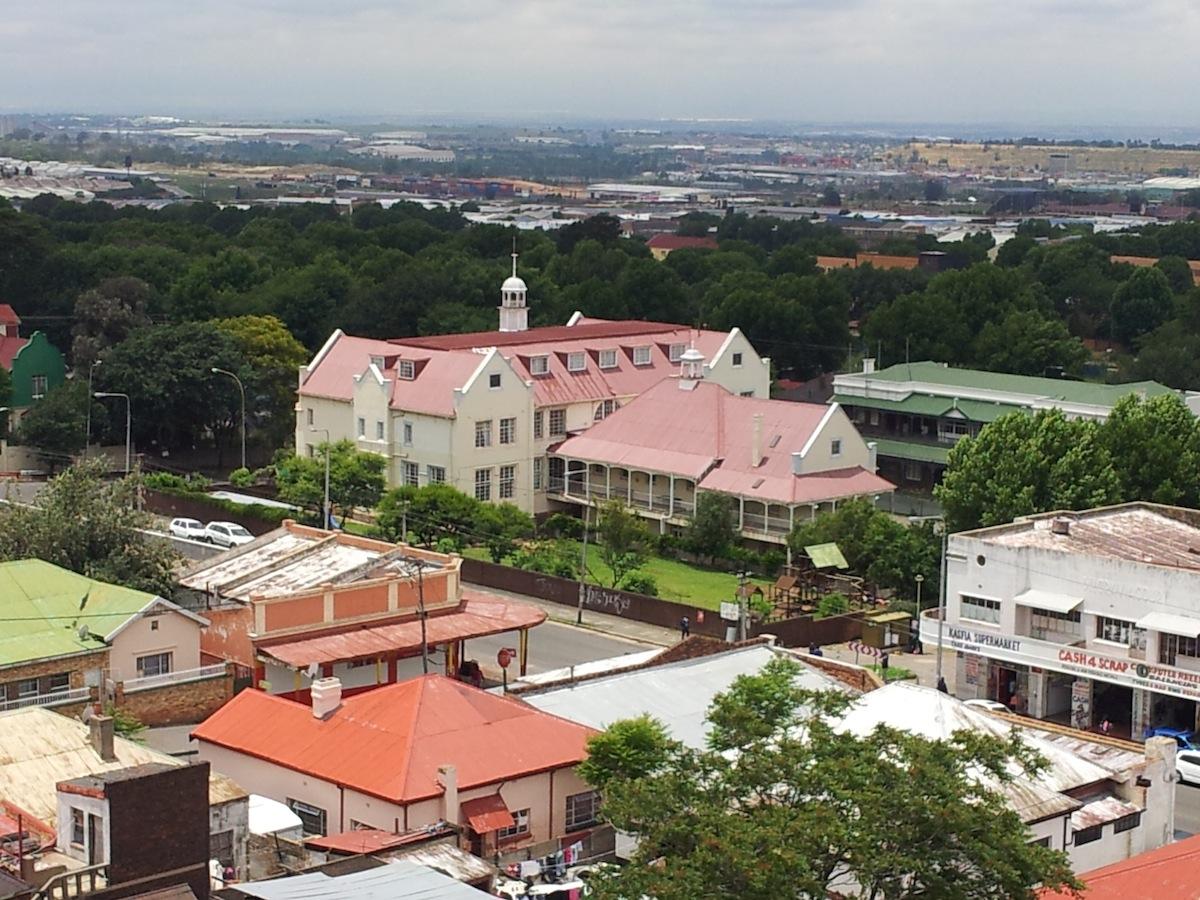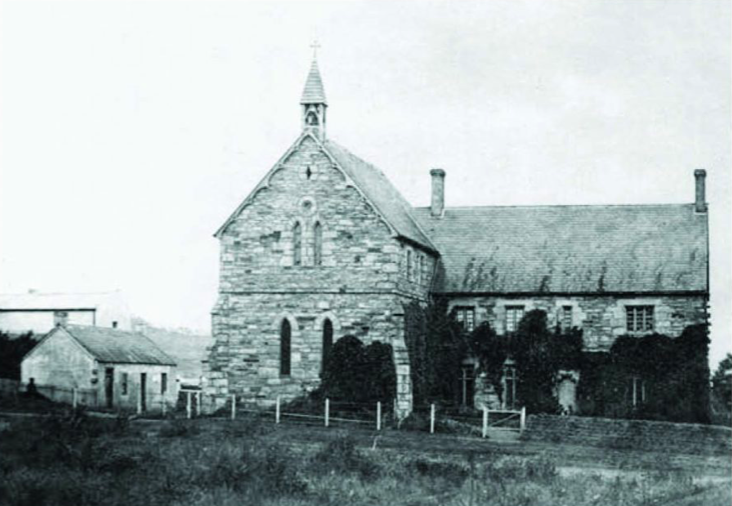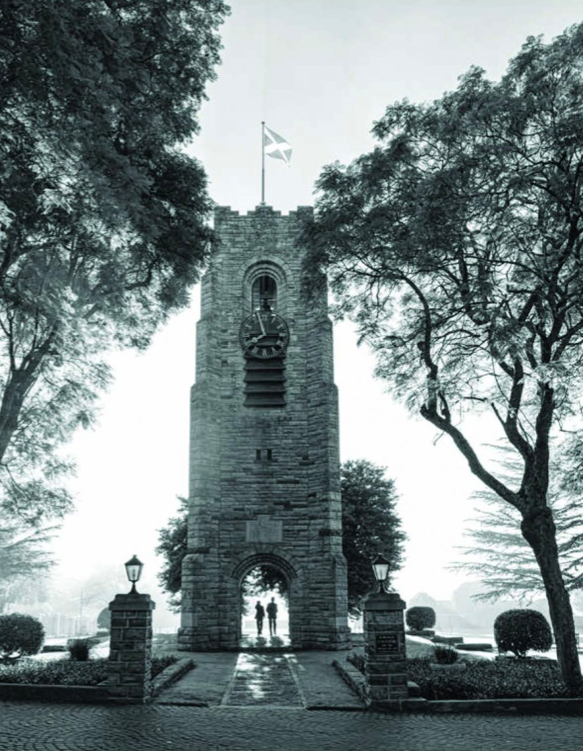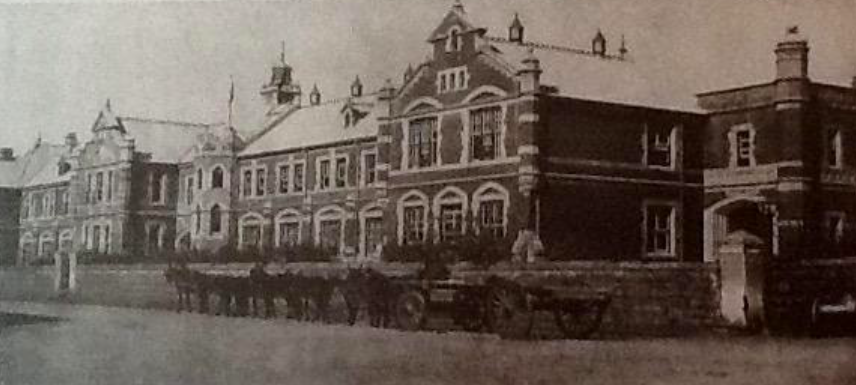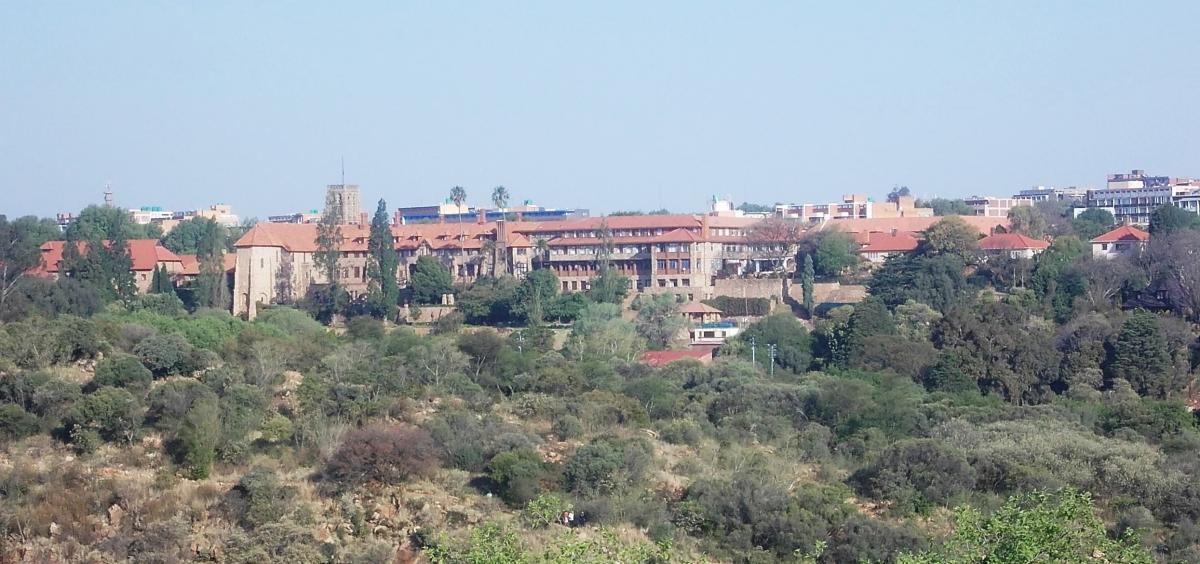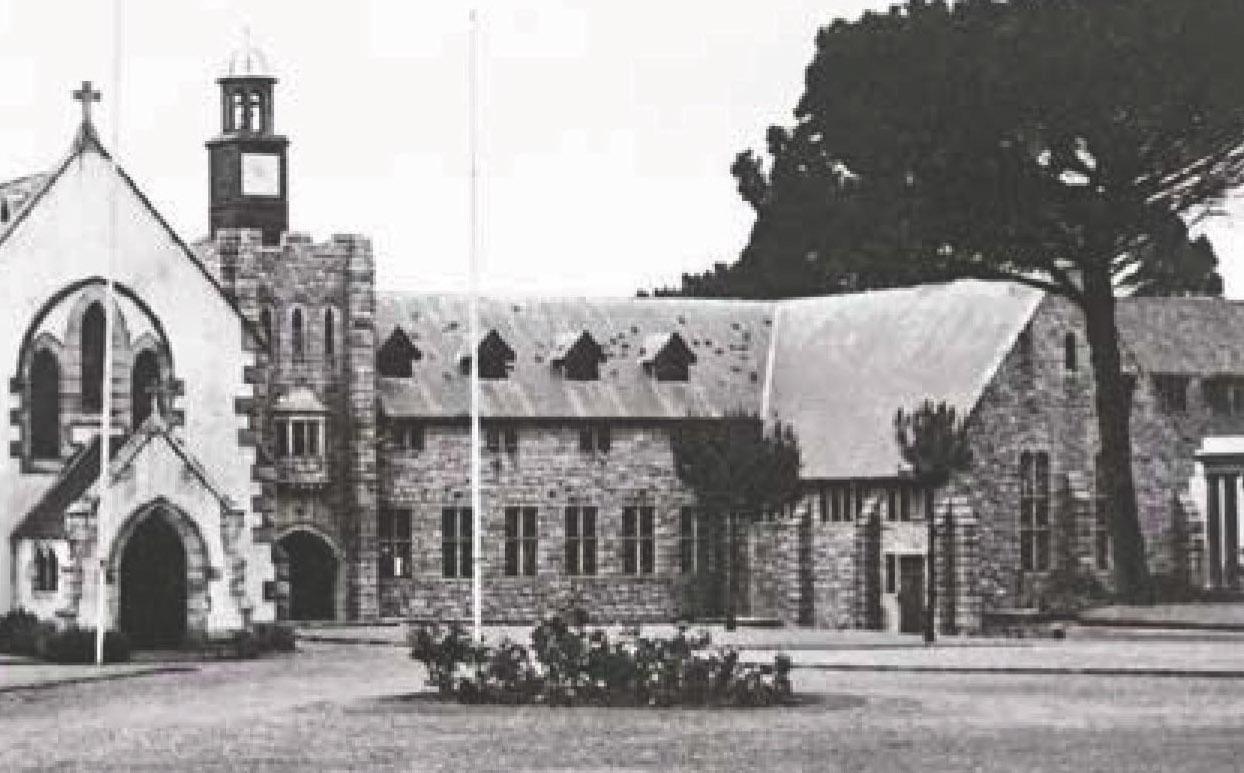
This book does not appear to have one single editor but is a Don Nelson publishing project. Chapters on this selection of prominent South African schools have been contributed by people associated with the schools or compiled from previous histories. Hence the first impression is that an enormous amount of effort has been poured into this publication with many individuals writing chapters and many others editing. Archivists and curators have combed the archives and museums to supply the photographs. It is a visually pleasing book with an old fashioned period feel matching the subject matter as all the photographs are in black and white. The paper is glossy and the book is a generous size for the soft cover format.
Book Cover
The introduction (no author given) opens with the sage comment that “schools form the foundation of society”. All of the schools chosen are over a hundred and thirty years old. Age alone shrieks of a long and proud lineage. The principal criterion for inclusion was a foundation date - prior to 1890. All these schools were established during the colonial era and reflected the colonial society, its political structure and its ethos. Once the British were in command at the Cape they wanted to anglicize through an English education policy. But there was also a reaction on the part of the Dutch Reform Church and mission education introduced another model. What happened in the Cape makes for an interesting case study about change and transformation. This is a Cape focused book, 15 of the twenty schools are in the Western or Eastern Cape, with Cape Town, Paarl, Stellenbosch, Port Elizabeth and East London dominating the contributions. Kwa-Zulu Natal, as we now call the province is represented by a couple of Pietermaritzburg schools and Durban High. The Free State only gets a showing with Grey College and St Mary’s Johannesburg is the only Gauteng or even Transvaal school included in this selection.
Old St Mary's school building in Belgravia (The Heritage Portal)
For ease of reference, the schools featured in this book are: SACS; Wynberg Boys High; Bishops; Grey College; St Andrew's College; Paarl Boys' High; Grey High; Paarl Gymnasium; Queen's College; Rhenish; Dale College; Maritzburg College; Muir College; Durban High; Paul Roos Gymnasium; St Cyprian's; Springfield; Hilton College; Selborne College & St Mary's. If you attended one of these schools you will want this book. These are all mainly English schools – the one exception being the Afrikaans medium, coeducational Paarl Gymnasium.
First school building at St Andrew's
The book is a celebration of history and South African school traditions and origins. It is surprising how varied the roots of South African schools were - Scottish, English, missionary, church initiatives, public and private enterprises. Each aimed at their particular brand of education and an attempt to shape the character of their pupils, not only during their five formative high school years but into adulthood. Some of the schools chosen were private establishments, others came out of a state system where often an older state school tried to model itself on the best of the English private school (or confusingly called the “public school”). Often the men and women teachers came from a British immigrant background - South African schools were influenced by Scottish and English cultures.
Looking back over a century and more gives a very grand sense of what mattered in a superior education. Debates about single sex versus coeducational classrooms, the race factor and recent transformation, changes in technology and teaching methodology have to be read as subtexts and those probing questions are given a broad brush stroke. The type of education best suited to a 21st century South Africa only comes into the marketing approach that so many schools now adopt. Modern, newer schools are no less varied.
Many boys schools in South Africa pushed the ideal of heroism and military preparedness in the promotion of pipe bands, links with city regiments such as the Cape Town Highlanders and played at turning out soldiers in their cadet corps. No wonder that these English speaking schools sacrificed their boys in both the first and the second world wars. War memorials in gates, memorial chapels and clock towers mark those losses of young lives for King and Empire.
St Andrews Clock Tower
The book will have wide appeal because there is a rich array of fascinating historical photographs of the generations of the boys (and some girls) who were products of these 20 schools. Past pupils will want to turn the pages and spend a nostalgic few hours dipping into the pleasures of well-remembered camaraderie of school friendships, classroom agonies and sporting triumphs. All these schools pride themselves on their traditions. Things like school songs, mottos, uniforms, boater and basher hats, colours, badges and insignia, war cries, prizes for achievements, annual class photographs, honours boards, school houses, trophies and silver shields made for an aura of age and convey identity. Schools mould character, educate minds and promote physical health. Sport has always mattered for South African schools.The top sport for boys was rugby but there was also cricket, boxing, wrestling, swimming, hockey, cycling, rowing, tennis – no wonder South African schools pulled in Olympic medals and turned out captains of national teams. For example, Graeme Pollock (cricket) and Siya Kolisa (Rugby) were both pupils at Grey High, Port Elizabeth.
Each school has a chapter in the book; the motto of the school follows, always in Latin but there is an English translation (two generations ago a translation would not have been necessary).
The premier school in this selection is SACS in Cape Town because it is the oldest high school in South Africa dating back to 1829. The opening chapter is followed by Wynberg Boys, Bishops (both Cape Town schools); then there are St Cyprian's, Springfield as other examples of good Cape Town Schools. Bloemfontein in the 19th century became an educational and a legal centre but only Grey College is featured. Grahamstown is another fine school town but only St Andrew’s college gets a look in. Back to the Cape and we find Paarl has two chapters for the Paarl Gymnasium and Paarl Boys. Kwa-Zulu Natal is in the line-up with Maritzburg College, Durban High and Hilton.
A weakness of the book is each discreet chapter is written as a school marketing promotional advertorial. There is considerable unevenness in the chapters. Each is a standalone essay. There is little self-reflection about gaps or weaknesses or possibilities of different models of education. The politics of education does not feature. There is no discussion of how education for all should or could be financed. How do we ensure quality for all young South Africans? A quality education costs a great deal and should taxes fund all education or should private schools receive some form of tax credit? Do private schools have a duty to offer scholarships?
I parted from this book with the thought of how very privileged the children who attended these schools were and are. Schools pass through phases and the enrolments in any one year reflect success or a fall in popularity. Invariably it’s the leadership of the Principals that make a school. It's worth reflecting on what makes for a great school head. They are the unsung heroes of education.
Admittedly those quality schools that continue to attract parents are supported by strong old boys clubs and generous donors. I particularly liked the chapter on the Renish girls school in Stellenbosch because it gives a glimpse of missionary driven education for women.
This books is also a valuable record of the architecture of school buildings. For example there is an early double spread photograph of Grey College, Bloemfontein designed by the architect W H Stucke. I would have liked more about the architecture and architects of South African schools. Perhaps there is scope for another book.
Grey College Bloemfontein
This book made me think about past books of this type. I located in my library, Peter Hawthorne and Barry Bristow’s Historic Schools of South Africa - An Ethos of Excellence published by Pachyderm Press 1993. That was a boxed, full colour illustrated book of 23 prestige schools of South Africa, a coffee table boxed collectable item which featured St John's College on the cover. Twelve of the schools featured in that earlier book also appear in the new 20 schools book.
St John's College (The Heritage Portal)
In summary the value of this book lies in its presentation of some fine archival photographs. It is an excellent addition to a South African book collection.
2020 Guide Price: R350 (Johannesburg Heritage Foundation - copies available or can be ordered ) or R450 available from Exclusive Books.
I thank Don Nelson for supplying a Review copy.
Kathy Munro is an Honorary Associate Professor in the School of Architecture and Planning at the University of the Witwatersrand and chair of the Johannesburg Heritage Foundation. She enjoyed a long career as an academic and in management at Wits University. She trained as an economic historian. She is an enthusiastic book person and has built her own somewhat eclectic book collection over 40 years. Her interests cover Africana, Johannesburg history, history, art history, travel, business and banking histories. She researches and writes on historical architecture and heritage matters. She is a member of the Board of the Johannesburg Heritage Foundation and is a docent at the Wits Arts Museum. She is currently working on a couple of projects on Johannesburg architects and is researching South African architects, war cemeteries and memorials. Kathy is a member of the online book community the Library thing and recommends this cataloging website and worldwide network as a book lover's haven.

